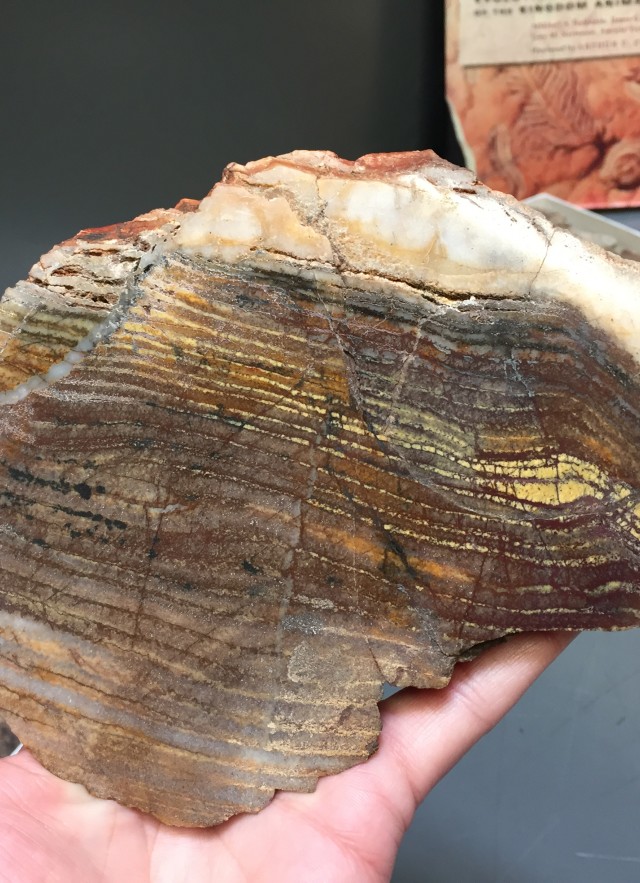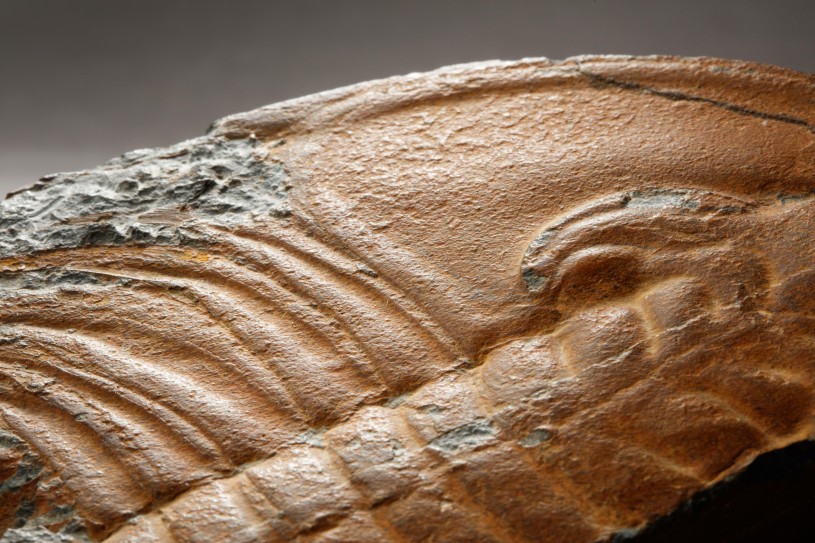
“Old” is relative here at the Natural History Museum. In collections like Mammalogy or Herpetology, a 100-year-old specimen might seem really old. The La Brea Tar Pits have fossils that are between 10,000 and 50,000 years old. That may sound pretty old, but not if you talk to someone in the Vertebrate Paleontology Department. They deal with fossils that are millions of years old, like 6-million-year-old bone-crushing dogs (and their poop).
And then there is the Dinosaur Institute, which has many fossils older than 100 million years. And even that, while definitely old, is nothing compared to some of the specimens in Invertebrate Paleontology. They have a few fossils that are billions of years old!
Our Oldest Fossil
The picture above is one of the stromatolites in the Invertebrate Paleontology Collections — by far the oldest fossils we have. This particular one — about 3.4 billion years old — represents some of the earliest life on this planet. The stripes were formed by layer after layer of cyanobacteria, which formed mounds over time. Stromatolites still exist today on the coasts of places like Australia. Yes, after billions of years, cyanobacteria are still alive and kicking.
Cyanobacteria, even though they formed these mounds, are tiny, single-celled creatures. What about some of the oldest animals in our collections? Just a few steps from the stromatolites, you can find trilobites, which are among the oldest animals on Earth. These critters evolved during the Cambrian Period, starting around 500 million years ago. Because they had a hard exoskeleton, some of them are preserved in amazing detail, even after half a billion years.

Don’t you feel so young now?